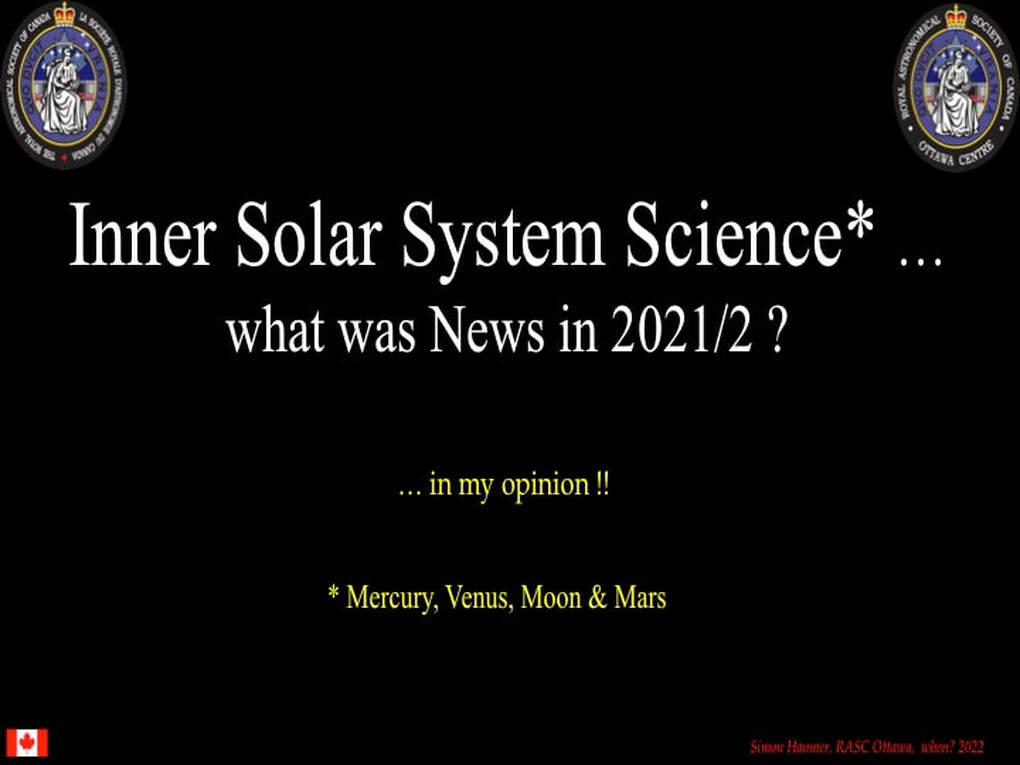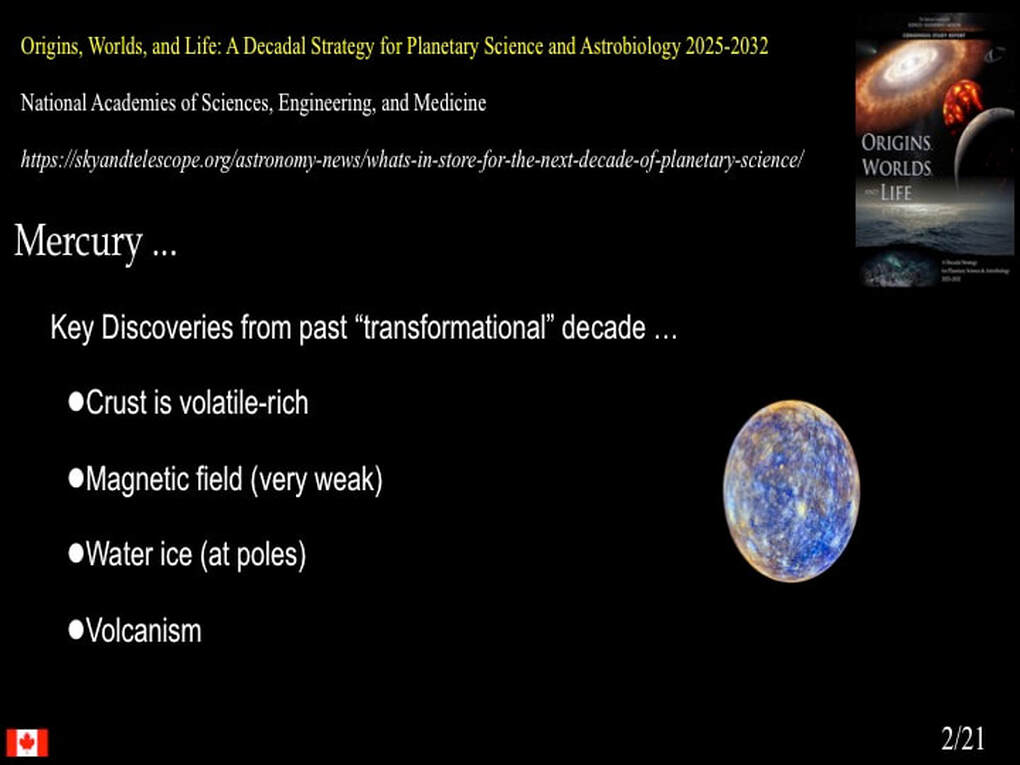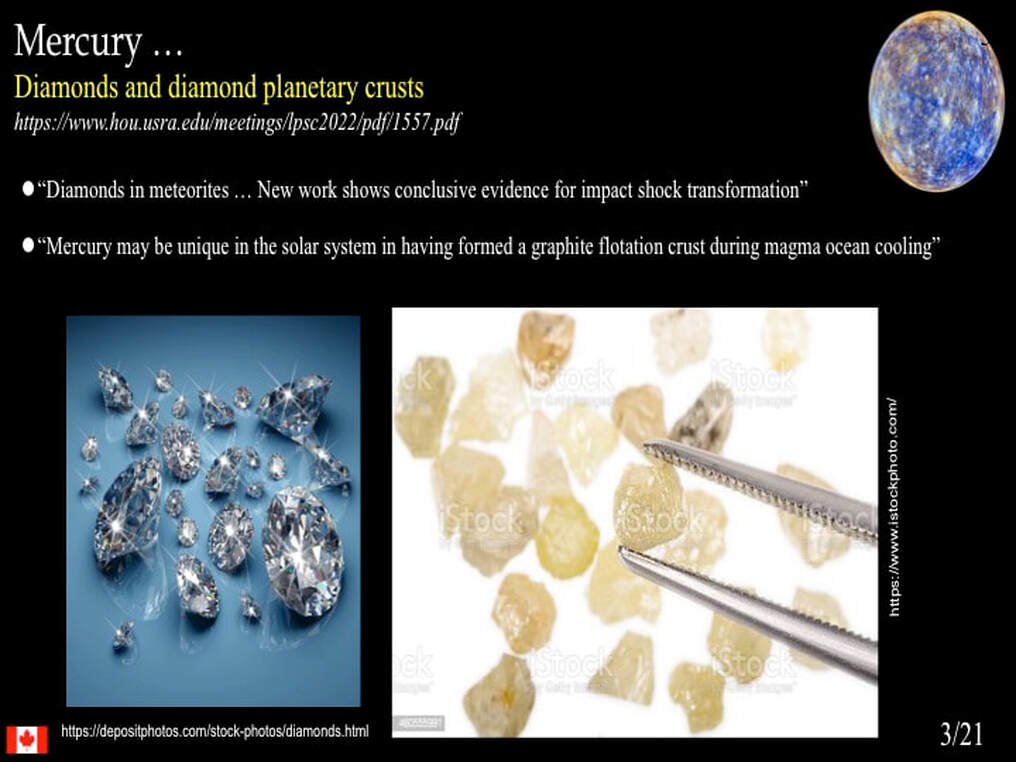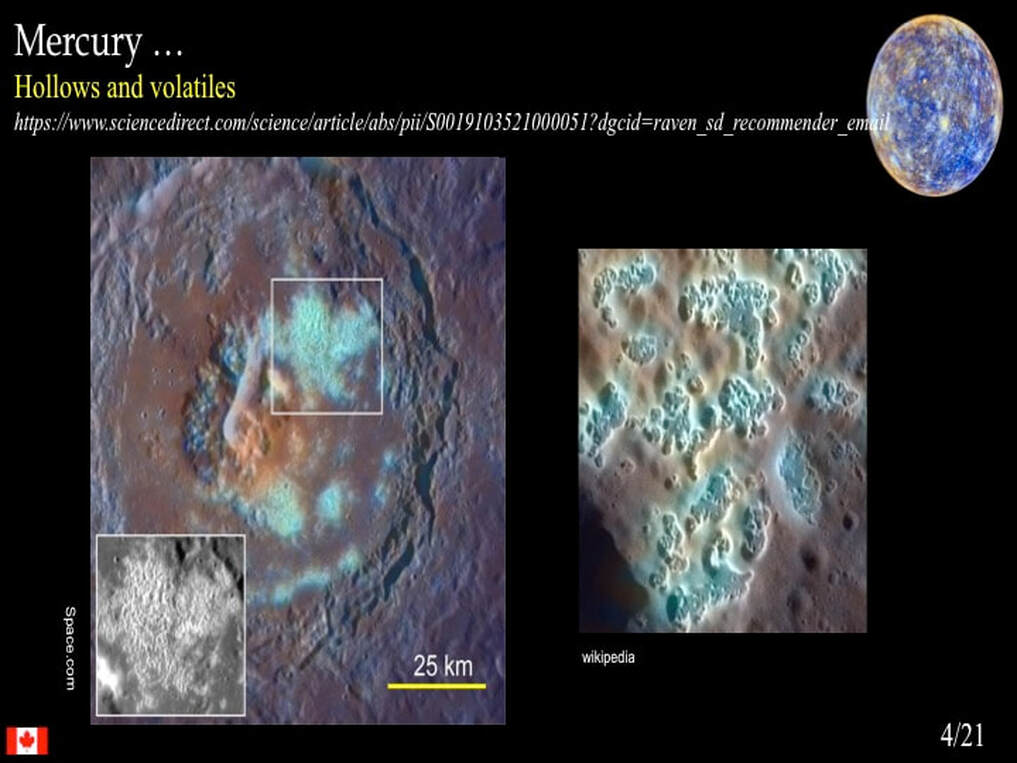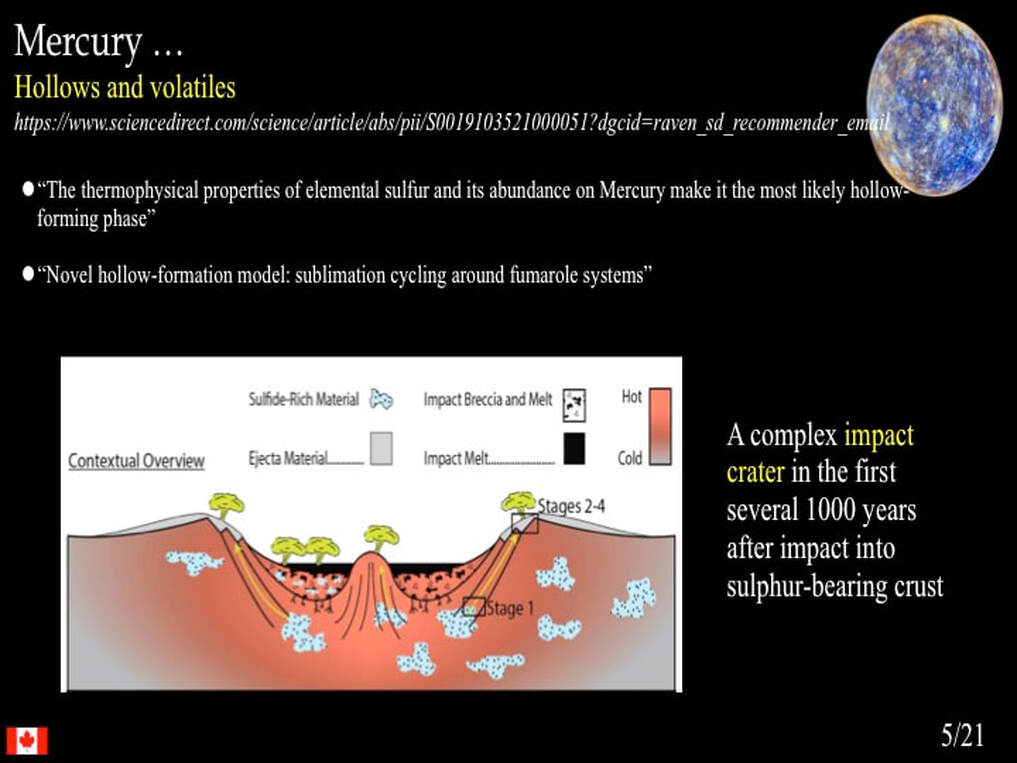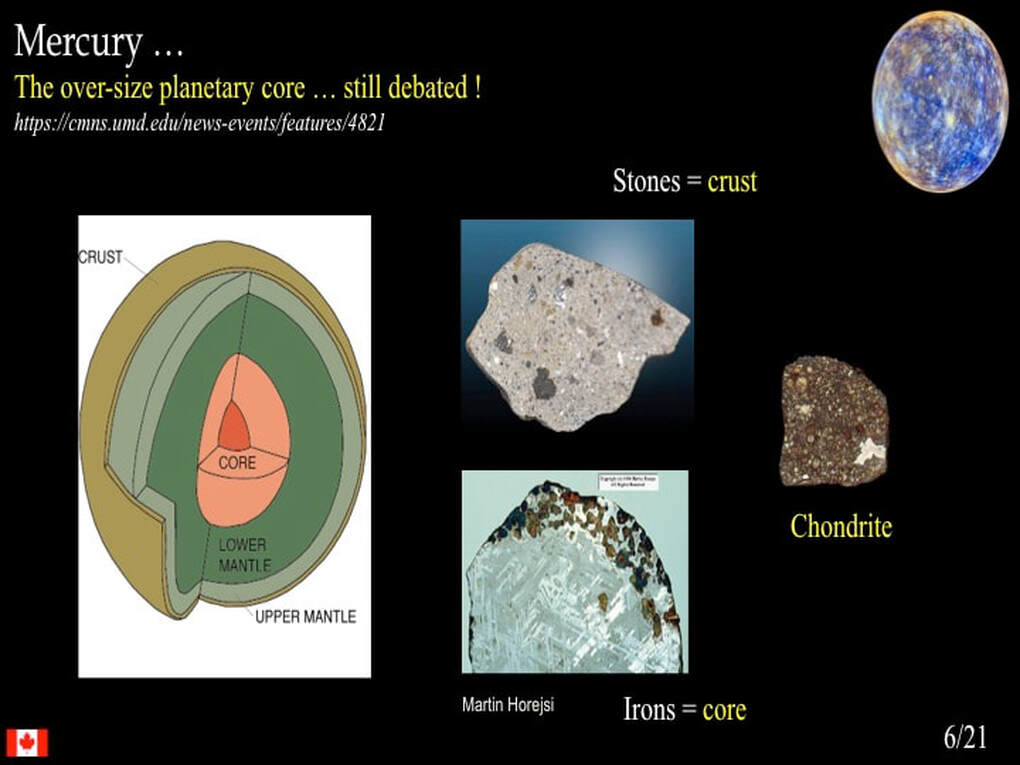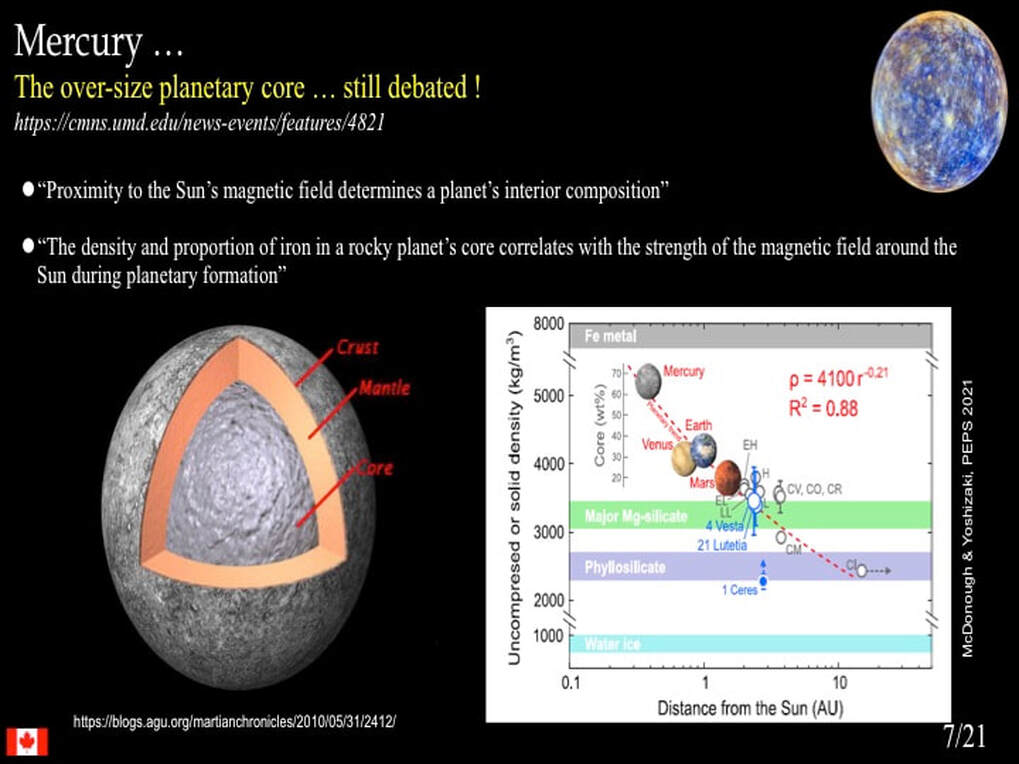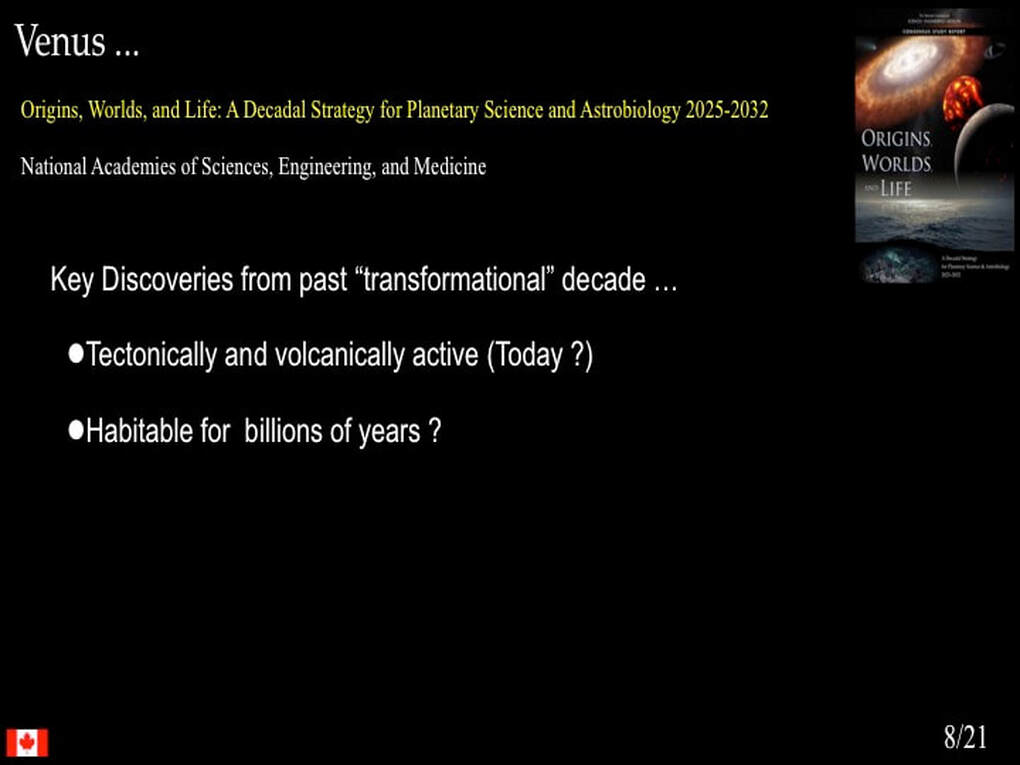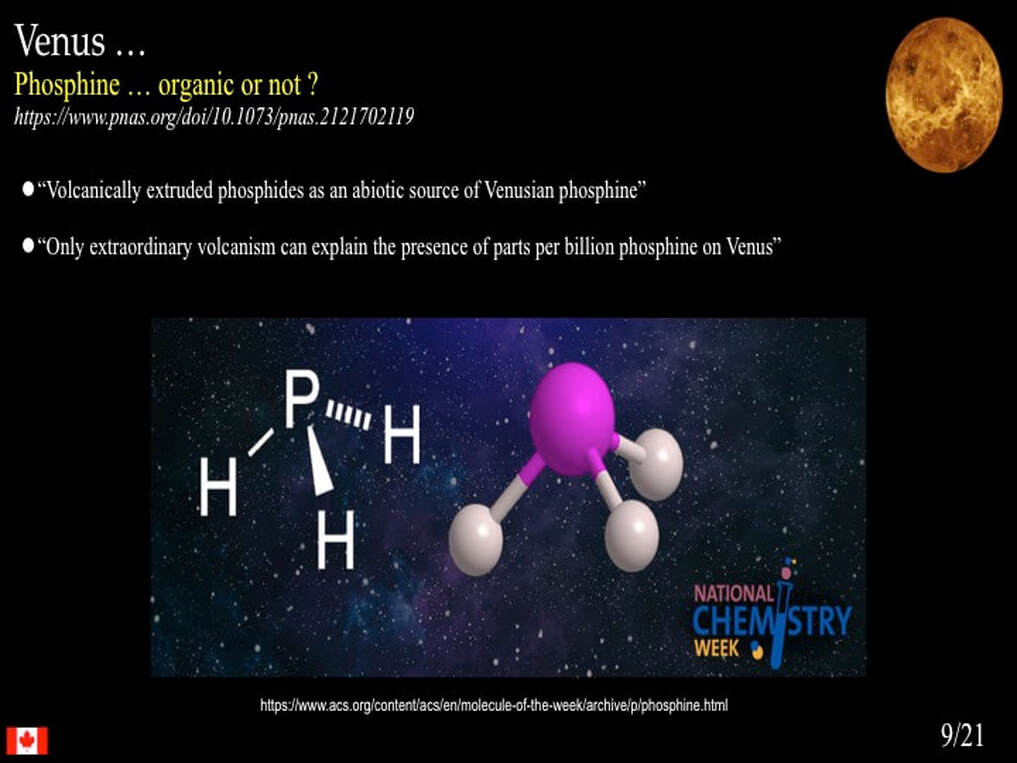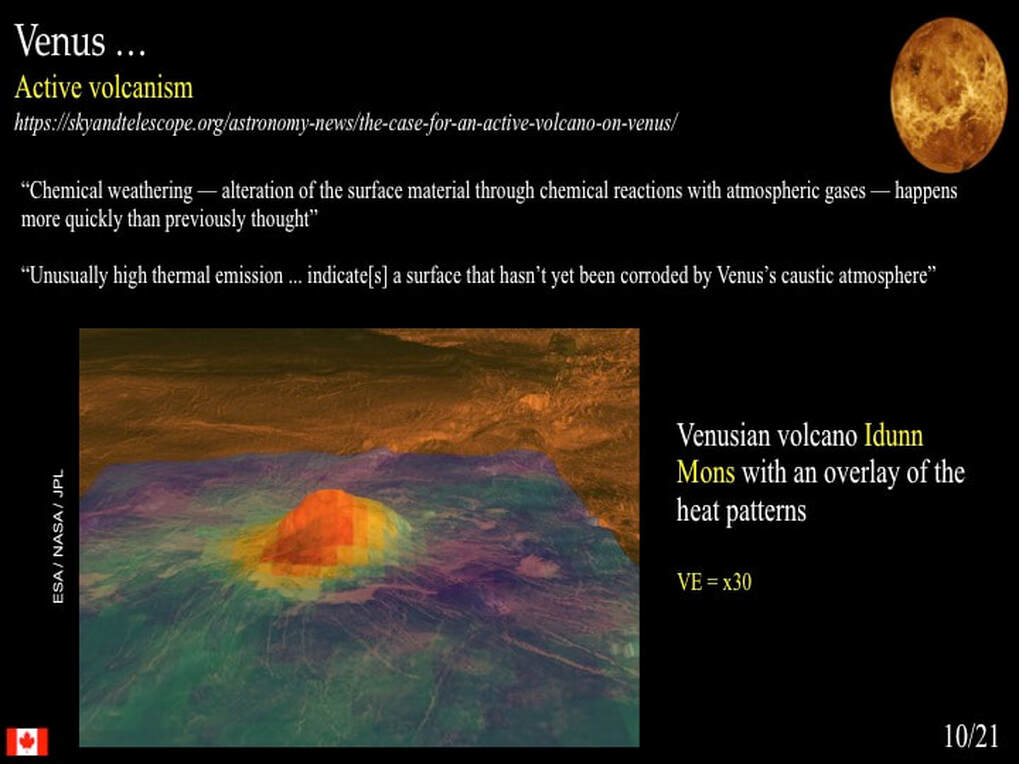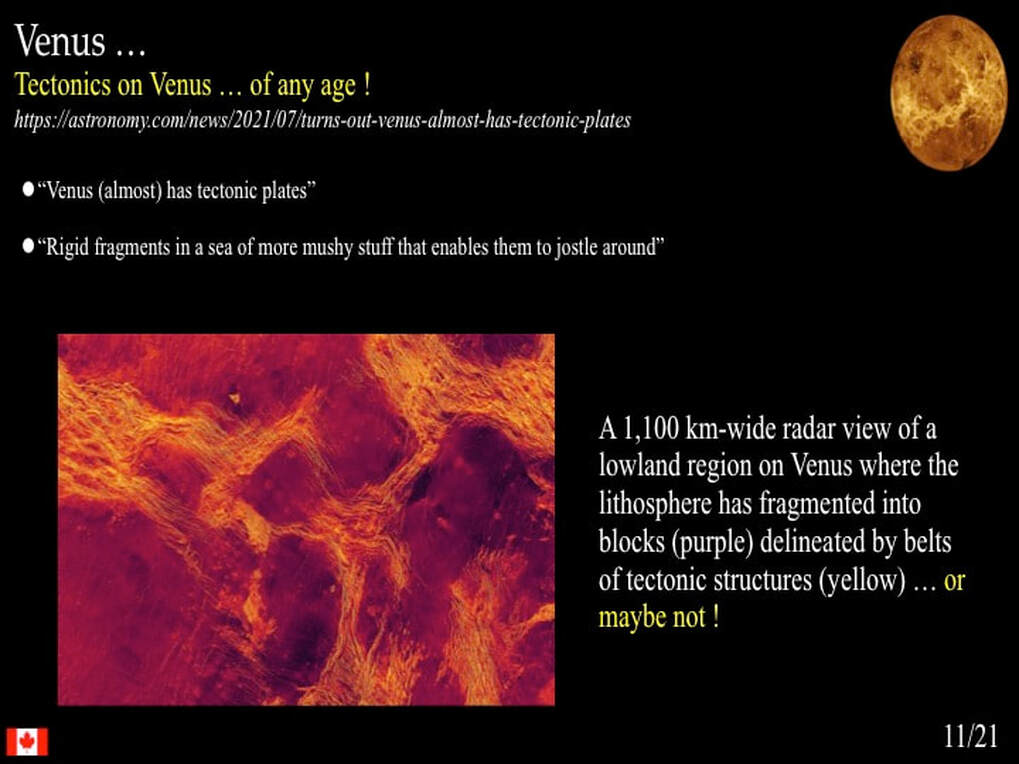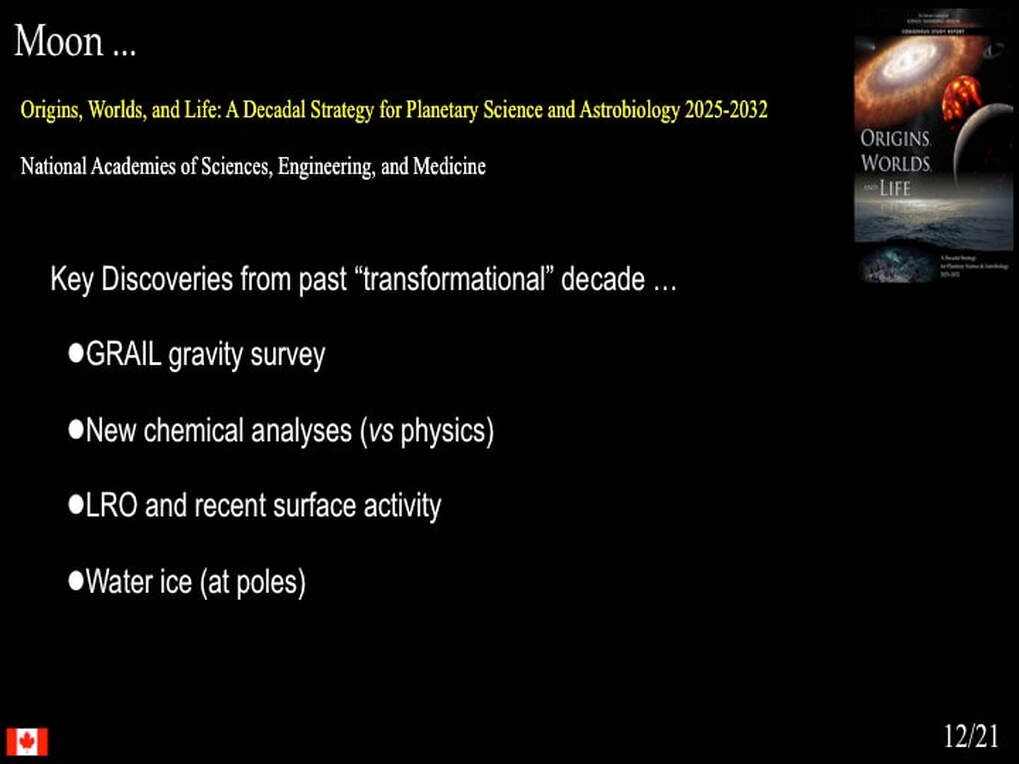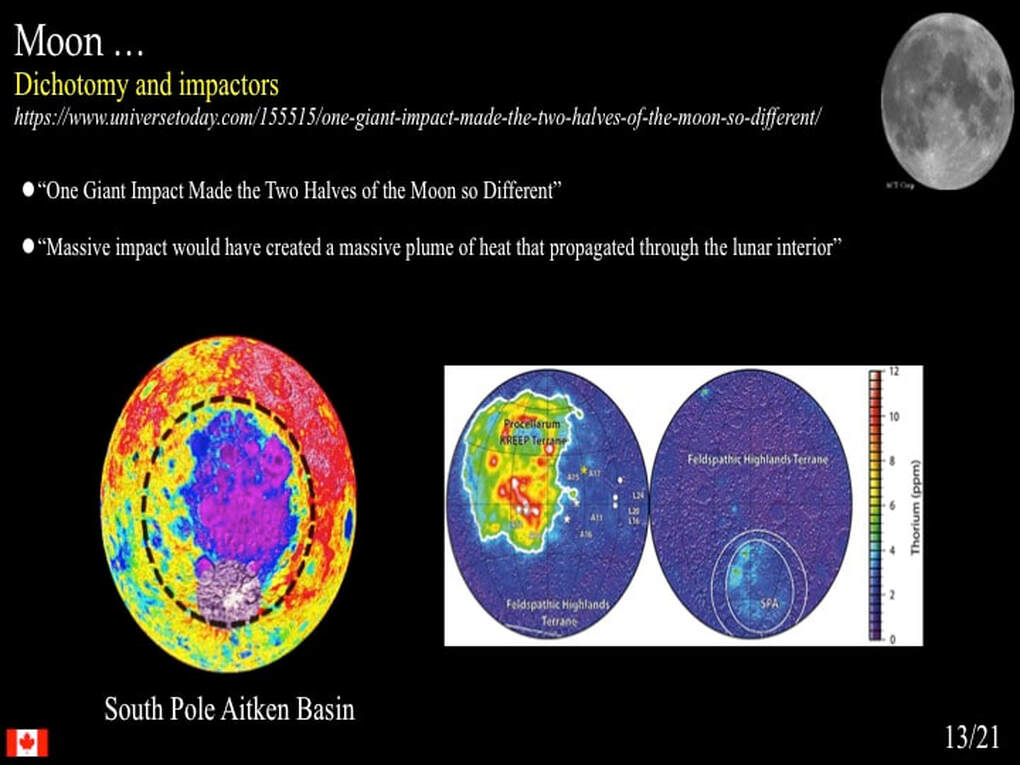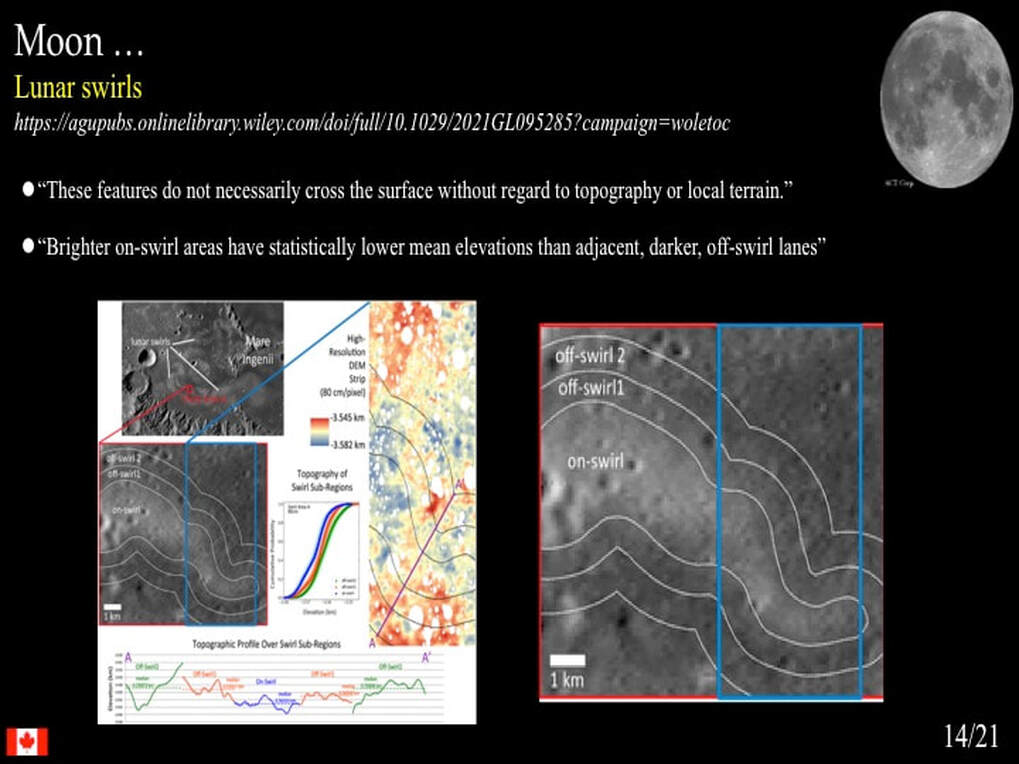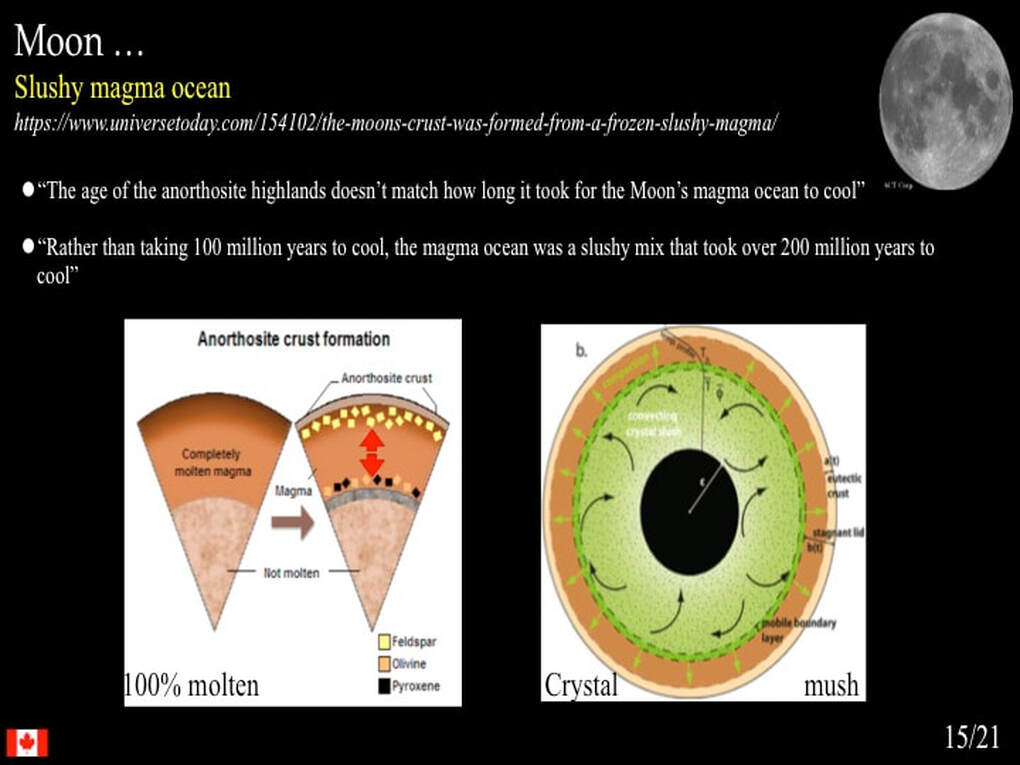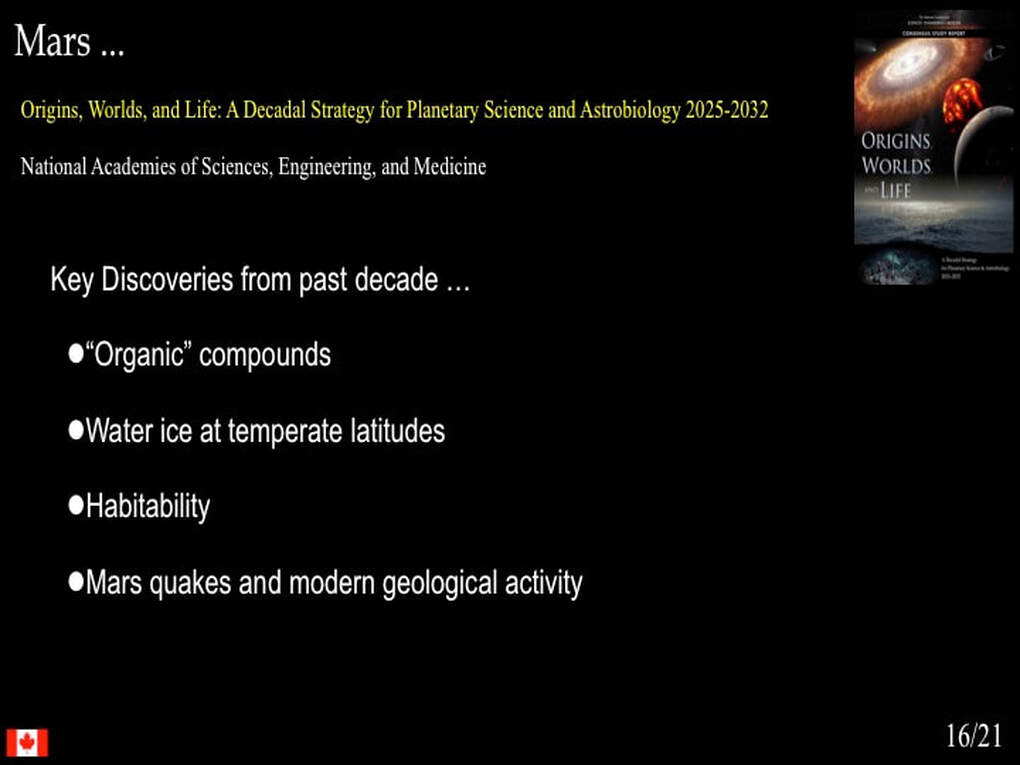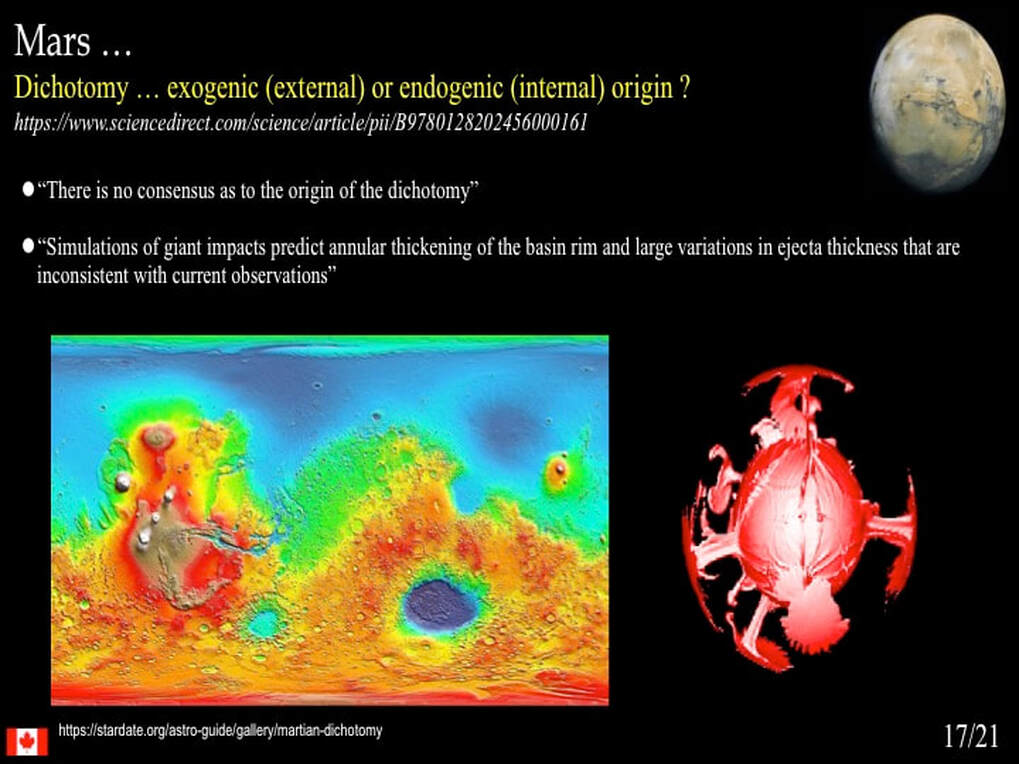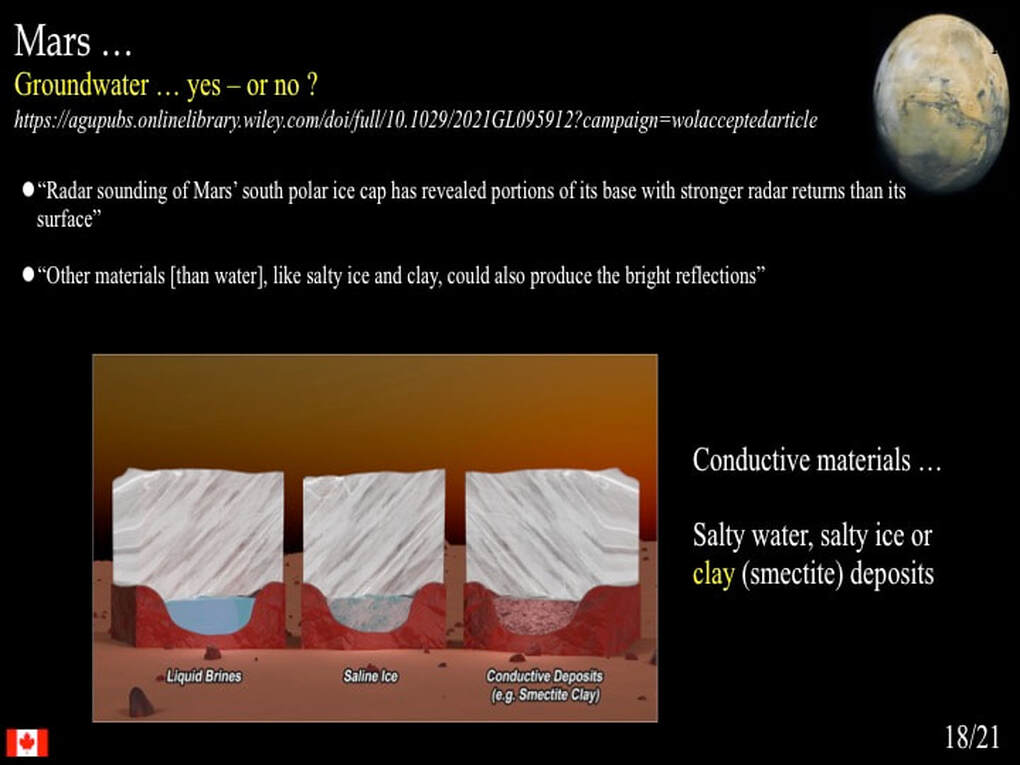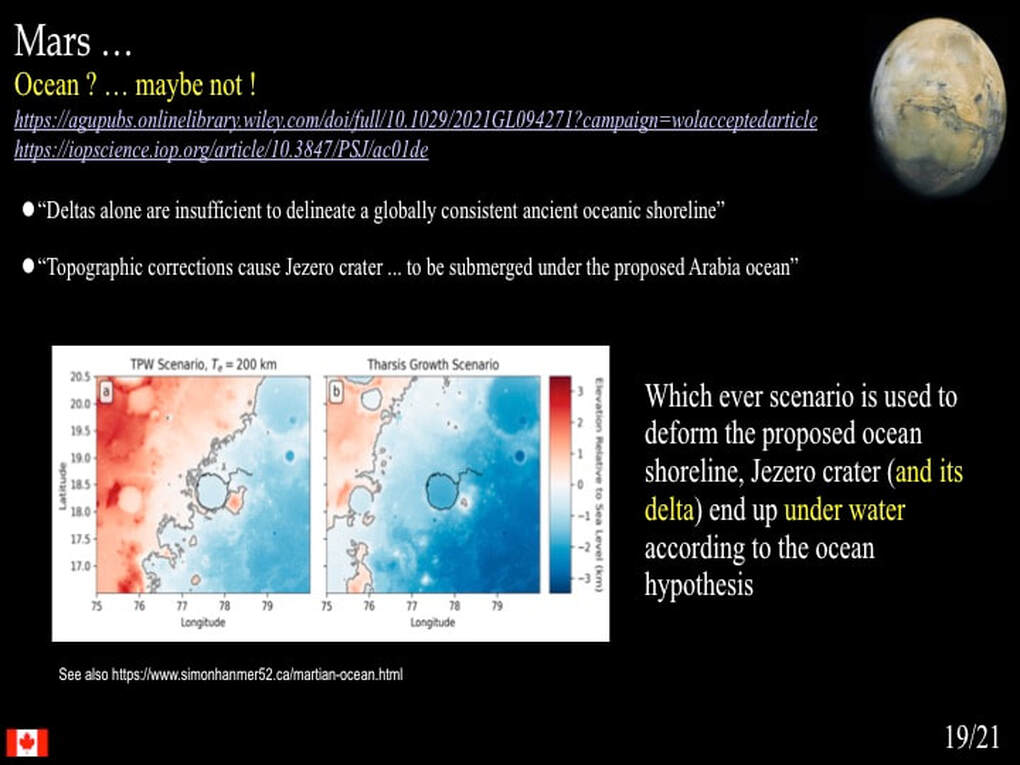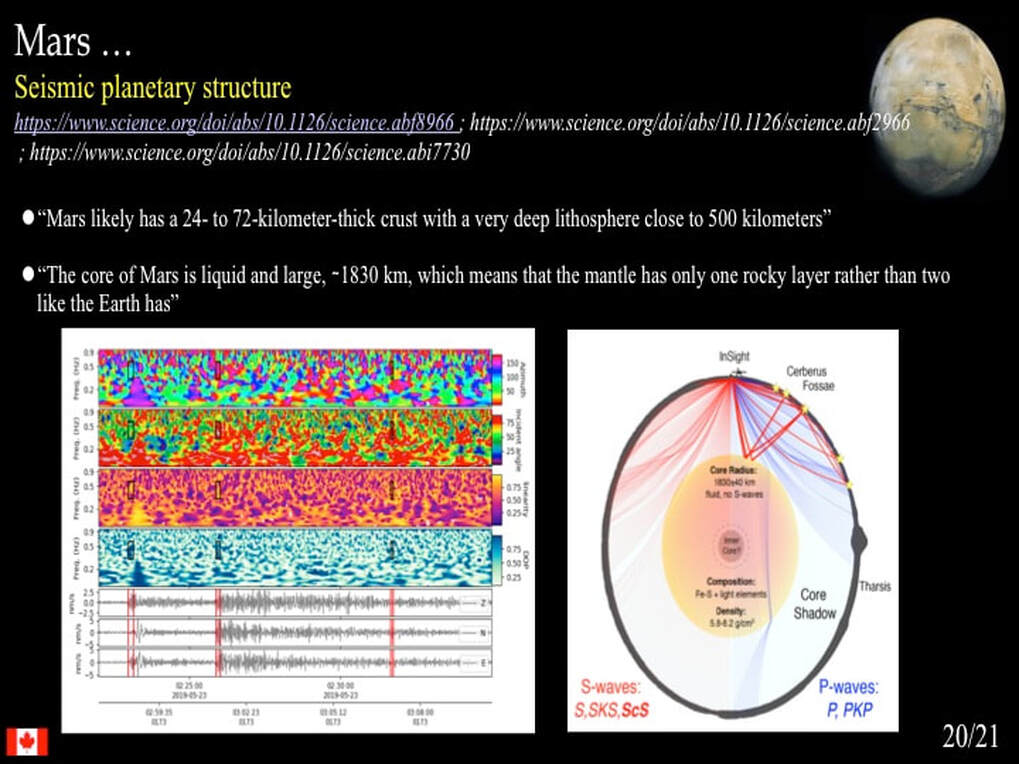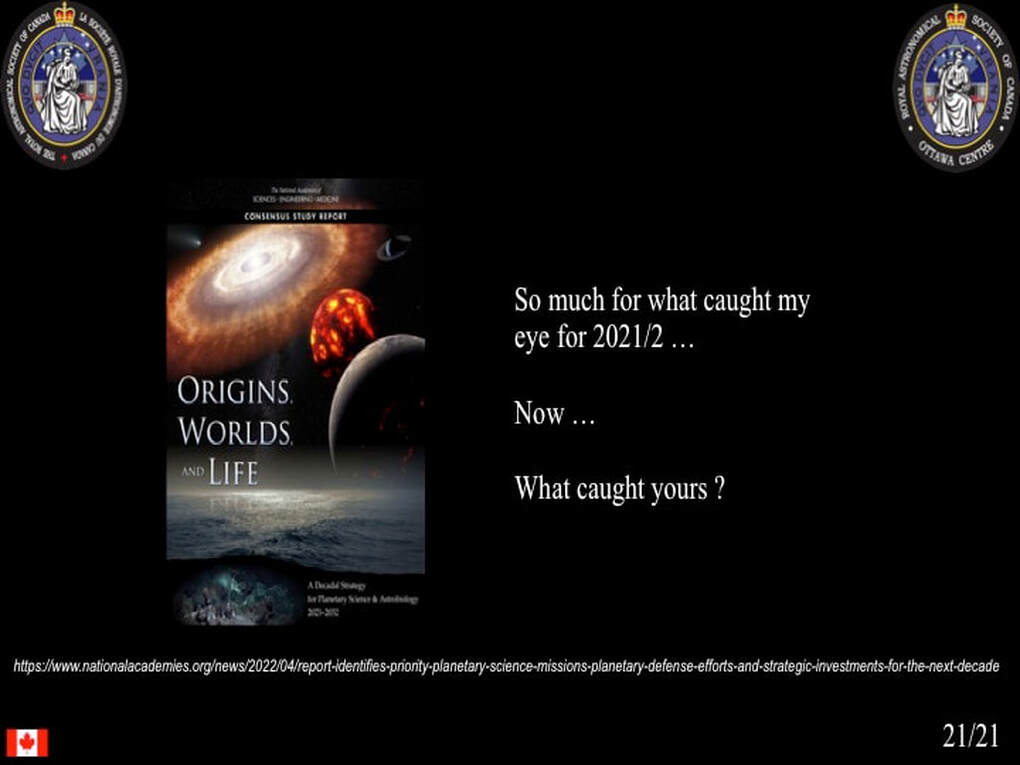SOLAR SYSTEM SCIENCE in 2021/22
- What's new for amateur astronomers ?
Solar System science is advancing at an ever increasing rate, some of which I have brought to your attention over the past 20-odd years. During the past few years I have presented an annual update on the thinking of professional planetary scientists - and it's time to bring you up to date on Solar System thinking for 2021. Trouble is there's so much that I could tell you about - and not all of it would be of interest to most amateur astronmers. So in this presentation I'm going to limit this talk to the inner Solar System : Mercury, Venus, Mars and the Moon.
However, this year we have some help ... freely available on the web from the National Academies of Sciences in the US. They have just released a comprehensive report entitled A Decadal Strategy for Planetary Science 2025-2032 in which they present summaries on all aspects of Solar System Science over the past "transformational" decade - from planets to asteroids.
https://skyandtelescope.org/astronomy-news/whats-in-store-for-the-next-decade-of-planetary-science/
It's well worth looking at, even if only diagonally. At the very least, it's worth going to the Sky & Telescope link (shown here) and reading their summary of the Decadal Strategy. For each of the rocky planets, the Decadal Strategy provides a short list of "Key Discoveries". So, for each of the rocky planets, my plan here is to compare the the Decadal Strategy short list of key discoveries with my own perception of key points of potential interest to amateur astronomers - such as RASC members - stemming from publications that saw the light of day during 2021 and 2022.
Let's start here with Mercury. According to the Decadal Survey the key discoveries of the past decade include :
https://skyandtelescope.org/astronomy-news/whats-in-store-for-the-next-decade-of-planetary-science/
It's well worth looking at, even if only diagonally. At the very least, it's worth going to the Sky & Telescope link (shown here) and reading their summary of the Decadal Strategy. For each of the rocky planets, the Decadal Strategy provides a short list of "Key Discoveries". So, for each of the rocky planets, my plan here is to compare the the Decadal Strategy short list of key discoveries with my own perception of key points of potential interest to amateur astronomers - such as RASC members - stemming from publications that saw the light of day during 2021 and 2022.
Let's start here with Mercury. According to the Decadal Survey the key discoveries of the past decade include :
- The presence of abundant volatiles in the planetary crust
- The detection of a very weak magnetic field
- Water ice in permanent shadow in impact craters at the poles
- Decoding of the history of surface volcanism
Note the two direct quotes from an extended abstract on this topic given at a recent science meeting :
https://www.hou.usra.edu/meetings/lpsc2022/pdf/1557.pdf
You'll find similar direct quotes on most of the following slides. If we parse the first statement it says that we know diamonds occur in some meteorites, and that new laboratory work indicates that some form by the transformation of carbon (graphite) into diamond due to the high pressures generated by bolide impacts. The second statement tells us that of all the planets, Mercury may have had a crust of graphite "scum" that floated on top of a primordial magma ocean soon after it first formed. That means that the crust of Mercury may contain diamond. Not the jewellery kind that you see on the left, but rough diamonds such as on the right. Actually, more likely micro-diamonds or diamond dust ! The paper goes on to suggest that - hypothetically - outside of our Solar System, this process of impact transformation could result in planets with crusts made entirely of diamond.
https://www.hou.usra.edu/meetings/lpsc2022/pdf/1557.pdf
You'll find similar direct quotes on most of the following slides. If we parse the first statement it says that we know diamonds occur in some meteorites, and that new laboratory work indicates that some form by the transformation of carbon (graphite) into diamond due to the high pressures generated by bolide impacts. The second statement tells us that of all the planets, Mercury may have had a crust of graphite "scum" that floated on top of a primordial magma ocean soon after it first formed. That means that the crust of Mercury may contain diamond. Not the jewellery kind that you see on the left, but rough diamonds such as on the right. Actually, more likely micro-diamonds or diamond dust ! The paper goes on to suggest that - hypothetically - outside of our Solar System, this process of impact transformation could result in planets with crusts made entirely of diamond.
Other features related to crustal volatiles on Mercury - referred to as "Hollows" - are quite spectacular. They tend to occur on the floors of impact craters (note the scale bar) and do not themselves have raised rims. Hence they are thought to be collapse features that form holes when buried "volatiles" sublimate into space (Mercury has no atmosphere to speak of). In fact, there's a very real possibility that Hollows are not only very young, but they may even be forming today !
Slide #5 :
What is the sublimating volatile made of ? There are two main candidates :
https://www.sciencedirect.com/science/article/abs/pii/S0019103521000051?dgcid=raven_sd_recommender_email
So some clever folks suggest that a bolide makes a crater beneath which the impact generates extra heat, which mobilises the buried sulphur that rises along fractures toward the surface where it sublimates into space at small volcanic centres (called "fumaroles" [smoking] on Earth). Thus explaining the relationship between Hollows and impact craters.
What is the sublimating volatile made of ? There are two main candidates :
- Carbon compounds ... i.e. Graphite +++
- Pure elemental sulphur
https://www.sciencedirect.com/science/article/abs/pii/S0019103521000051?dgcid=raven_sd_recommender_email
So some clever folks suggest that a bolide makes a crater beneath which the impact generates extra heat, which mobilises the buried sulphur that rises along fractures toward the surface where it sublimates into space at small volcanic centres (called "fumaroles" [smoking] on Earth). Thus explaining the relationship between Hollows and impact craters.
Its metal core is way out of proportion to the size of the planet as a whole, and this has long created major problems for the overall model of how rocky planets form by accretion of primitive chondritic material and differentiate into core, mantle and crust.
There are all kinds of theories to account for this, ranging from a massive impact that stripped away much of the original mantle of a once much larger Mercury - to an anomalous iron-rich composition for the inner-most accretionary disk from which all of the planets and the Sun formed. All have major problems : for example, why would the innermost solar disk be so iron-rich in the first place ? Now, recent work suggests that it's all down to the Sun's magnetic field :
https://www.sciencedirect.com/science/article/abs/pii/S0019103521000051?dgcid=raven_sd_recommender_email
Since that magnetic field is stronger the closer you get to the Sun, it attracted the iron dispersed though out the original accretionary disk. Planetary scientists arrived at this suggestion by comparing the cores of all the rocky bodies in the inner Solar System and showing how - proportionally with respect to planet size - the amount of iron increases the closer you get to the Sun. It's certainly as good as any other explanation on the table !
https://www.sciencedirect.com/science/article/abs/pii/S0019103521000051?dgcid=raven_sd_recommender_email
Since that magnetic field is stronger the closer you get to the Sun, it attracted the iron dispersed though out the original accretionary disk. Planetary scientists arrived at this suggestion by comparing the cores of all the rocky bodies in the inner Solar System and showing how - proportionally with respect to planet size - the amount of iron increases the closer you get to the Sun. It's certainly as good as any other explanation on the table !
Let's now turn to Venus. According to the Decadal Survey the key discoveries of the past decade include :
- Recent and maybe on-going tectonic and volcanic activity
- Potential habitability - perhaps lasting for billions of years
On the other hand ... there was phosphine ! Phosphine is a simple compound of phosphorus and hydrogen that may have been detected in the upper atmosphere of Venus - maybe. There are doubts. It can be the product of organic metabolism ... for example by bacteria - but it can also be the product of inorganic volcanic activity. The initial suggestions that phosphine indicated bacteria floating around in the upper atmosphere of Venus were unconvincing, to say the least. So folks then turned to trying to explain venusian phosphine by volcanism. However, as the two direct quotes from a recent extended abstract on this topic show, there's problem :
https://www.pnas.org/doi/10.1073/pnas.2121702119
Apparently you would need more volcanic activity on Venus than we can justify with current knowledge in order to produce even minute traces of phosphine. In short, if the phosphine is really there, we still don't know why !
https://www.pnas.org/doi/10.1073/pnas.2121702119
Apparently you would need more volcanic activity on Venus than we can justify with current knowledge in order to produce even minute traces of phosphine. In short, if the phosphine is really there, we still don't know why !
Still on the topic of volcanism on Venus, there's a strong set of arguments in support of the idea that some volcanic eruptions might be very young - and maybe even on-going today. Let's parse the two direct quotes from a recent Sky & Telescope article on this topic :
https://skyandtelescope.org/astronomy-news/the-case-for-an-active-volcano-on-venus/
The first tells us that new evidence and calculations indicate that, under the conditions of the hot venusian atmosphere, the chemical alteration (corrosion) of volcanic rocks happens very quickly. However, the second quote says that geophysical readings from orbit indicate that the surface of a major volcano on Venus must be made of uncorroded fresh rock. When you put the two ideas together .. you have to conclude that there's some very young lava on the slopes of this volcano ! I don't see any way around that !
https://skyandtelescope.org/astronomy-news/the-case-for-an-active-volcano-on-venus/
The first tells us that new evidence and calculations indicate that, under the conditions of the hot venusian atmosphere, the chemical alteration (corrosion) of volcanic rocks happens very quickly. However, the second quote says that geophysical readings from orbit indicate that the surface of a major volcano on Venus must be made of uncorroded fresh rock. When you put the two ideas together .. you have to conclude that there's some very young lava on the slopes of this volcano ! I don't see any way around that !
Another recent Sky & Telescope article reports on a recent paper that claims to show that the surface of Venus might be tectonically active, including - perhaps - at the present day :
https://astronomy.com/news/2021/07/turns-out-venus-almost-has-tectonic-plates
The authors of the scientific paper claim that complex bands (yellow in this image) represent zones of strongly deformed rocks transformed by the jostling of the the large smooth blocks between them (purple). By jostling, they envisage an analogy between these crustal blocks and jostling sea ice. They go on to suggest that this might indicate what the early Earth looked like before the establishment of modern plate tectonics. It's an interesting idea, but those yellow zones are VERY wide (100-200 km) - an order of magnitude wider than I would expect from Earth examples of slipping and sliding zones ... and I worked on this kind of thing professionally for ~40 years. However, it's already seduced many in the planetary science world, and figures prominently in the Decadal Strategy.
https://astronomy.com/news/2021/07/turns-out-venus-almost-has-tectonic-plates
The authors of the scientific paper claim that complex bands (yellow in this image) represent zones of strongly deformed rocks transformed by the jostling of the the large smooth blocks between them (purple). By jostling, they envisage an analogy between these crustal blocks and jostling sea ice. They go on to suggest that this might indicate what the early Earth looked like before the establishment of modern plate tectonics. It's an interesting idea, but those yellow zones are VERY wide (100-200 km) - an order of magnitude wider than I would expect from Earth examples of slipping and sliding zones ... and I worked on this kind of thing professionally for ~40 years. However, it's already seduced many in the planetary science world, and figures prominently in the Decadal Strategy.
Turning now to the Moon. According to the Decadal Survey the key discoveries of the past decade include :
- A global gravity survey that highlighted buried structures
- New Chemistry that challenges lunar origin models based on Physics
- High resolution imaging by the LRO satellite programme
- Water ice at the poles
But here I want to highlight aspects of the Moon that are visible to us as amateur astronomers, starting with a hypothesis to explain the difference between the lunar near- and far-sides. A recent paper, summarised by Universe Today, suggests that the difference (dichotomy) might be explained by the effects of a massive impact in early lunar history : the South Pole Aitken Basin located on the far-side :
https://www.universetoday.com/155515/one-giant-impact-made-the-two-halves-of-the-moon-so-different/
The idea here is that the impact would have generated a wave of heat that would have mobilised a massive plume of molten rock that swept throughout the lunar interior right to the other side. This plume would have swept up all kinds of heat-producing elements from the lunar interior and carried them to the near-side, especially to the Procellarum KREEP terrane.That extra heat would have contributed to forming the massive volcanic plains we see on the near-side as the dark lunar mare ... and would have allowed that volcanism to continue to ~2 Ga - whereas the far-side was already "dead and cold".
https://www.universetoday.com/155515/one-giant-impact-made-the-two-halves-of-the-moon-so-different/
The idea here is that the impact would have generated a wave of heat that would have mobilised a massive plume of molten rock that swept throughout the lunar interior right to the other side. This plume would have swept up all kinds of heat-producing elements from the lunar interior and carried them to the near-side, especially to the Procellarum KREEP terrane.That extra heat would have contributed to forming the massive volcanic plains we see on the near-side as the dark lunar mare ... and would have allowed that volcanism to continue to ~2 Ga - whereas the far-side was already "dead and cold".
A lunar feature that many amateur astronomers enjoy observing are "swirls" (e.g. Reiner Gamma). These are light grey patches, very irregular and "swirly" in shape, that have long defied a robust explanation. Some have suggested that they represent dust caught up in local magnetic fields, but that explanation isn't quite enough ... there's something missing :
https://agupubs.onlinelibrary.wiley.com/doi/full/10.1029/2021GL095285?campaign=woletoc
Now, thanks to very high resolution topographic altimetry, a new paper has shown that the light swirls occur in VERY shallow depressions ... just a few metres below the local lunar surface. For the first time we now have a possible mechanism for trapping the dust after it has become mobilised. In fact, the researchers suggest that this indicates that lunar dust may be more generally mobile than we previously thought !
https://agupubs.onlinelibrary.wiley.com/doi/full/10.1029/2021GL095285?campaign=woletoc
Now, thanks to very high resolution topographic altimetry, a new paper has shown that the light swirls occur in VERY shallow depressions ... just a few metres below the local lunar surface. For the first time we now have a possible mechanism for trapping the dust after it has become mobilised. In fact, the researchers suggest that this indicates that lunar dust may be more generally mobile than we previously thought !
OK, so we've looked at dark lunar mare and light lunar swirls, but what are folks current thinking about all the white stuff (anorthosite) that makes up the lunar highlands ? A very interesting idea is encapsulated in the two direct quotes from a recent paper summarised in Universe Today :
https://www.universetoday.com/154102/the-moons-crust-was-formed-from-a-frozen-slushy-magma/
Recall that the general idea is that the white feldspar that makes up the bulk of the anorthosite represents a low density mineral "scum" that floated to the top of an initial magma ocean in early lunar history (left). However, the first statement says that if you calculate how long it would take for a uniform, 100% liquid magma ocean to cool, it is much shorter than the range of crystallisation ages determined from samples brought back by the Apollo astronauts. However, some clever folks redid the calculation by assuming that instead of a 100% liquid magma ocean, the ocean was in fact a convecting slushy mixture of crystals and liquid - all cooling together - and found that this extended the cooling time (right) by just enough to cover the full range of anorthosite crystallisation ages !
https://www.universetoday.com/154102/the-moons-crust-was-formed-from-a-frozen-slushy-magma/
Recall that the general idea is that the white feldspar that makes up the bulk of the anorthosite represents a low density mineral "scum" that floated to the top of an initial magma ocean in early lunar history (left). However, the first statement says that if you calculate how long it would take for a uniform, 100% liquid magma ocean to cool, it is much shorter than the range of crystallisation ages determined from samples brought back by the Apollo astronauts. However, some clever folks redid the calculation by assuming that instead of a 100% liquid magma ocean, the ocean was in fact a convecting slushy mixture of crystals and liquid - all cooling together - and found that this extended the cooling time (right) by just enough to cover the full range of anorthosite crystallisation ages !
Let's now move beyond Earth and out to Mars. According to the Decadal Survey the key discoveries of the past decade for Mars include :
- The presence of "organic" compounds
- Water ice at temperate latitudes
- Habitability
- Mars quakes and modern geological activity
- Recall that the "organic" compounds are not organic materials ... i.e. the products of life ... and they have been known from inter-stellar space for quite some time.
- Water ice at temperate (as opposed to polar) latitudes is not a scientific breakthrough. We have known about glaciation features at these latitudes for a long time.
- But both of these "key discoveries" are part and parcel of NASA's never-ending "habitability" communications mantra about eventually finding evidence for for life on Mars (even if extinct). I'm sorry, but I find that it grows wearisome.
For example, what about the planet-scale dichotomy between the Northern Plains and the Southern Highlands (left) ... that some of our RASC members have successfully observed and imaged ? In a recent book - Mars Geological Enigmas (2021) - there are two papers that deal with this topic :
https://www.sciencedirect.com/science/article/pii/B9780128202456000161
One reviews the exogenic impact hypothesis and the other reviews the endogenic plume origin for the dichotomy. I have highlighted two statements from these papers. The first simply reminds us that the debate is on-going : there is no agreement to date. The second emphasises a problem with the impact hypothesis : There should be a thick ring of basin ejecta at the rim of the Northern Plains that should thin according to a predictable pattern as you move onto the highlands ... and it simply is not there ! Does this mean that the endogenic plume hypothesis (right) is correct ? No ... But it does leave it as the contender that's still standing.
https://www.sciencedirect.com/science/article/pii/B9780128202456000161
One reviews the exogenic impact hypothesis and the other reviews the endogenic plume origin for the dichotomy. I have highlighted two statements from these papers. The first simply reminds us that the debate is on-going : there is no agreement to date. The second emphasises a problem with the impact hypothesis : There should be a thick ring of basin ejecta at the rim of the Northern Plains that should thin according to a predictable pattern as you move onto the highlands ... and it simply is not there ! Does this mean that the endogenic plume hypothesis (right) is correct ? No ... But it does leave it as the contender that's still standing.
For the past few years there has been much talk and speculation regarding the presence of lakes of liquid water on Mars beneath the south polar ice cap. Let's be clear here : no-one has seen water. But some get very excited cos "where there's water there's life" ... to quote the NASA mantra. The "evidence" is a bright reflection in ice-penetrating radar that has been interpreted as lake water. However, the second statement lifted from a recent scientific paper on this topic calls this simple interpretation into question :
https://agupubs.onlinelibrary.wiley.com/doi/full/10.1029/2021GL095912?campaign=wolacceptedarticle
It turns out that salty ice, or clay (specifically a clay called smectite) can produce pretty much the same radar reflections. So much for present-day lakes on Mars ...
https://agupubs.onlinelibrary.wiley.com/doi/full/10.1029/2021GL095912?campaign=wolacceptedarticle
It turns out that salty ice, or clay (specifically a clay called smectite) can produce pretty much the same radar reflections. So much for present-day lakes on Mars ...
OK ... what about the hypothesis that the Northern Plains were once covered by an ocean of water ? A decade ago, this hypothesis appeared to be strongly supported by the purported distribution of river channels cutting the dichotomy boundary and depositing deltas there. I discussed this in some detail with you in 2012 ...
https://www.simonhanmer52.ca/martian-ocean.html
However, two recent papers call this line of evidence into question :
https://agupubs.onlinelibrary.wiley.com/doi/full/10.1029/2021GL094271?campaign=wolacceptedarticle
https://iopscience.iop.org/article/10.3847/PSJ/ac01de
The first is a global review of "deltas" that concludes that many have been mis-identified.
Oooops ...
The second examines the purported ocean shoreline in detail. It has long been know that the purported ocean shoreline does not follow a single topographical contour (i.e. sea-level) so - if it exists - it must have been physically disturbed after it formed. Here's the problem : calculations show that Jezero Crater (Perseverance Rover) that contains a classical delta system would have been well under the ocean at the time that it formed - whatever model of physical disturbance is employed. Recall : deltas do not form under oceans - they form at the water's edge ! So the point being made here is that the ocean model is incompatible with deltas in Jezero Crater. Does this eliminate the ocean hypothesis ... ?? No, but it does complicate matters ! So what's new in planetary science ?
https://www.simonhanmer52.ca/martian-ocean.html
However, two recent papers call this line of evidence into question :
https://agupubs.onlinelibrary.wiley.com/doi/full/10.1029/2021GL094271?campaign=wolacceptedarticle
https://iopscience.iop.org/article/10.3847/PSJ/ac01de
The first is a global review of "deltas" that concludes that many have been mis-identified.
Oooops ...
The second examines the purported ocean shoreline in detail. It has long been know that the purported ocean shoreline does not follow a single topographical contour (i.e. sea-level) so - if it exists - it must have been physically disturbed after it formed. Here's the problem : calculations show that Jezero Crater (Perseverance Rover) that contains a classical delta system would have been well under the ocean at the time that it formed - whatever model of physical disturbance is employed. Recall : deltas do not form under oceans - they form at the water's edge ! So the point being made here is that the ocean model is incompatible with deltas in Jezero Crater. Does this eliminate the ocean hypothesis ... ?? No, but it does complicate matters ! So what's new in planetary science ?
So at last we come to what I personally think is the most interesting new news regarding Mars : seismological data from InSight, a stationary seismic recording station on Mars that picks up vibrations from Marsquakes. Three new papers have just been published in Science Magazine :
https://www.science.org/doi/abs/10.1126/science.abf8966
https://www.science.org/doi/abs/10.1126/science.abf2966
https://www.science.org/doi/abs/10.1126/science.abi7730
Although there's only the one seismic station, planetary scientists already have some excellent results at the scale of the planetary crust, mantle and core. On the left you can see what the data look like and some of the initial interpretations (don't look too closely - it's complicated). On the right you can see a graphic synthesis of what the planetary scientists think they have found. Keeping it simple ... what's new ?
https://www.science.org/doi/abs/10.1126/science.abf8966
https://www.science.org/doi/abs/10.1126/science.abf2966
https://www.science.org/doi/abs/10.1126/science.abi7730
Although there's only the one seismic station, planetary scientists already have some excellent results at the scale of the planetary crust, mantle and core. On the left you can see what the data look like and some of the initial interpretations (don't look too closely - it's complicated). On the right you can see a graphic synthesis of what the planetary scientists think they have found. Keeping it simple ... what's new ?
- Martian crust turns out to be pretty thick in places …
- Martian mantle is a single layer ... unlike Earth
- The martian core is relatively big (not like Mercury !!) and is entirely molten (that was a surprise !)
So, what's my take home message here ? Well, I've shown you what the Decadal Strategy thinks is key in recent planetary geology (at least for the rocky planets of the inner Solar System) ... and what I think would be of special interest to RASC Ottawa members. I've added here the link to the Decadal Strategy document itself :
https://www.nationalacademies.org/news/2022/04/report-identifies-priority-planetary-science-missions-planetary-defense-efforts-and-strategic-investments-for-the-next-decade
It gets a bit dense and jargony in places, but there's a lot that is accessible to the interested amateur ... such as yourselves. Download it and scan diagonally through it, only pausing at places that particularly interest you. Meanwhile, keep your eye out for amateur-oriented summaries in Sky & Telescope, Astronomy Magazine and Universe Today, all available on the web.
https://www.nationalacademies.org/news/2022/04/report-identifies-priority-planetary-science-missions-planetary-defense-efforts-and-strategic-investments-for-the-next-decade
It gets a bit dense and jargony in places, but there's a lot that is accessible to the interested amateur ... such as yourselves. Download it and scan diagonally through it, only pausing at places that particularly interest you. Meanwhile, keep your eye out for amateur-oriented summaries in Sky & Telescope, Astronomy Magazine and Universe Today, all available on the web.
Proudly powered by Weebly
